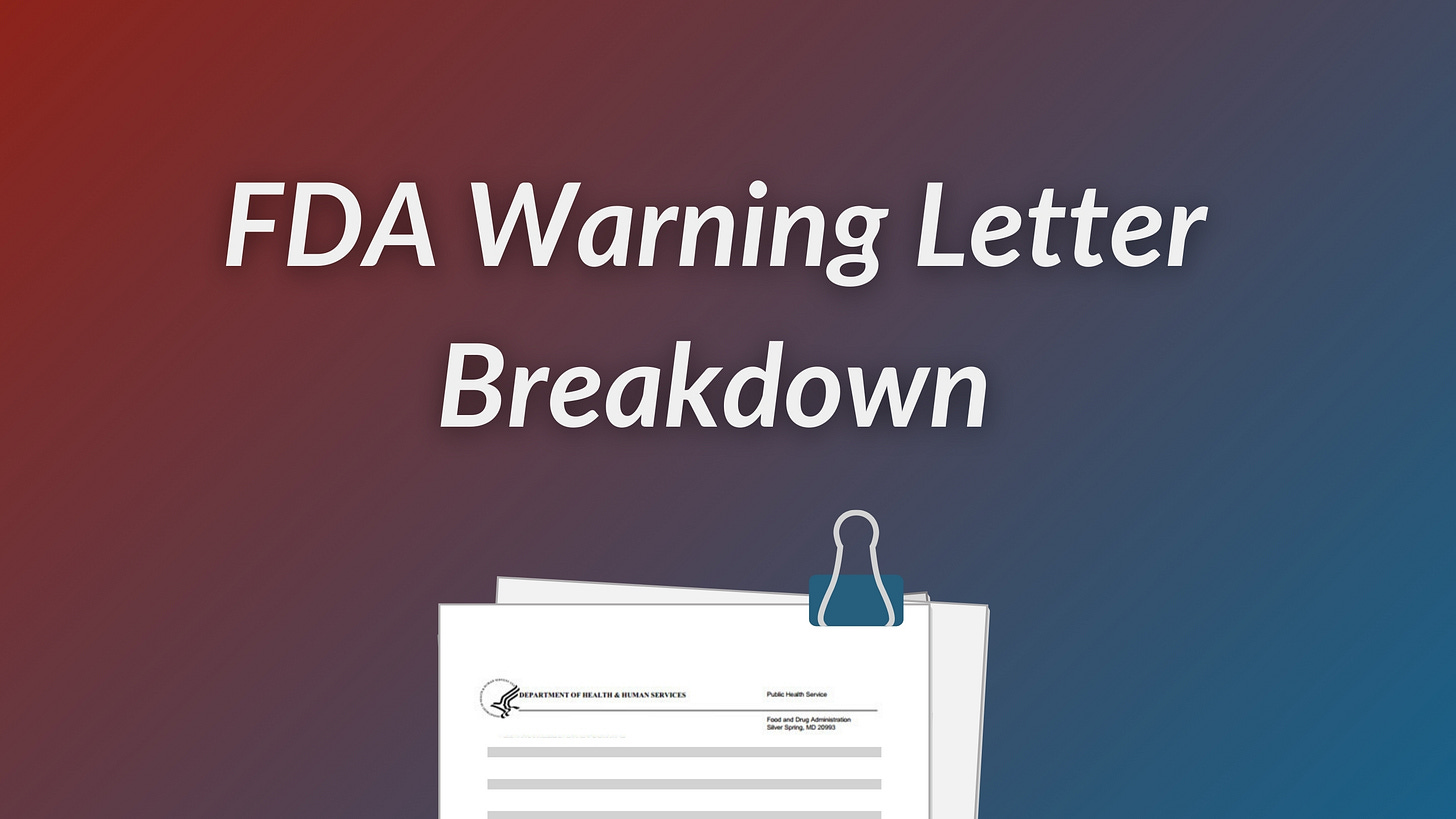FDA Warning Letter Breakdown: When Basic Testing Goes Missing at an OTC Drug Firm
Why a Colorado skin care manufacturer's quality failures led to a complete shutdown—and critical lessons for every manufacturer.
This breakdown is available for paid subscribers. Only paid subscribers get regular full access to our breakdowns and other analyses. If you’re not already a paid subscriber, you can upgrade here.
Want to stay out of our warning letter breakdowns? Contact us to access our global network of 3,250+ consultants and 250+ former FDA employees. We run audits, mock inspections, and remediation for 17 of the top 25 life science firms.
Today, we have a breakdown that examines quite a few serious quality system problems at a Colorado OTC drug manufacturer. While smaller in scale than typical pharma operations, the failures here—skipping identity testing, releasing untested products, and absent quality oversight—are risks that can emerge at any facility when basic controls are neglected.
On July 18, 2025, the FDA's CDER issued a warning letter to Kabana Skin Care LLC's Louisville, Colorado, facility following a February 19-20, 2025 inspection. The facility manufactures OTC drug products including sunscreens and antibacterial hand sanitizers. By March 12, 2025—less than a month after the inspection—the company had committed to cease all drug manufacturing permanently and initiated a voluntary recall of all products.
The FDA found the company's March 3, 2025, response "inadequate" due to a lack of supporting documentation and evidence of corrective actions. The violations paint a picture of a facility operating without even the most basic quality controls.
Below, we've detailed the critical violations and extracted actionable lessons that apply regardless of your facility's size or product portfolio.
The missing identity tests that could have been lethal
The FDA's first-cited violation cuts straight to patient safety: Kabana failed to test incoming high-risk components for identity, specifically ethanol and glycerin, before using them in drug manufacturing.
It’s not a paperwork issue—The FDA explicitly called out that identity testing for these components includes USP limit tests for potentially lethal contaminants (methanol in ethanol and diethylene glycol or ethylene glycol in glycerin). The agency noted that "the use of ethanol contaminated with methanol has resulted in various lethal poisoning incidents in humans worldwide."
Even more concerning, the firm hadn't established the reliability of their suppliers' analyses. This means they were likely manufacturing products blind, with no scientific evidence that components met safety specifications before use.
The FDA's remediation demands are stringent: test all retained component samples within 30 days, or if retains aren't available, test all marketed finished products for these contaminants.
They also required a full risk assessment for all products within expiry containing these high-risk ingredients.
Ask yourself:
Do we have a non-negotiable list of high-risk components that require specific identity testing regardless of supplier COAs?
Can our receiving department physically quarantine materials until identity testing is complete?
When was the last time we verified our suppliers' test methods match compendial requirements?
Release testing nowhere to be found
The second violation revealed an (arguably) even more fundamental failure. Kabana performed no chemical or microbiological testing on finished drug products before release and distribution.
During the inspection, company reps admitted they weren't conducting any release testing. No identity confirmation of active ingredients. No strength verification. No microbiological testing. Products were manufactured and shipped based solely on faith that the process worked.
The FDA emphasized that "appropriate release testing, including identity and strength testing of the active ingredient, must be performed before drug product release and distribution." Without this testing, there's no scientific evidence that products meet specs.
Ask yourself:
Is it physically possible in our system to release a batch without completed testing results?
Do our batch records require positive confirmation of test results, not just space for signatures?
If we discovered we'd been shipping untested product, how quickly could we identify and recall affected batches?
Quality unit MIA
The FDA found Kabana's quality unit failed to exercise basic responsibilities across multiple CGMP requirements.
The gaps were comprehensive:
No quality oversight procedures for raw material handling, production record review, investigations, complaints, or recalls.



